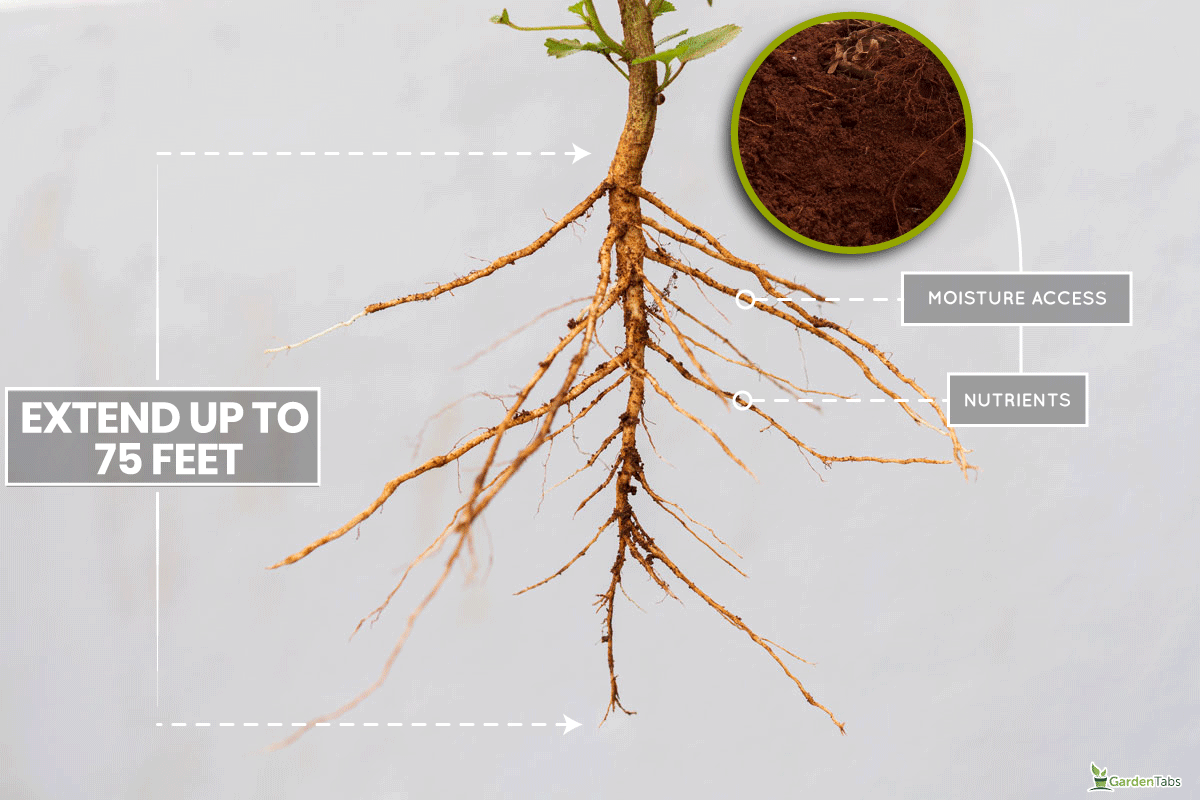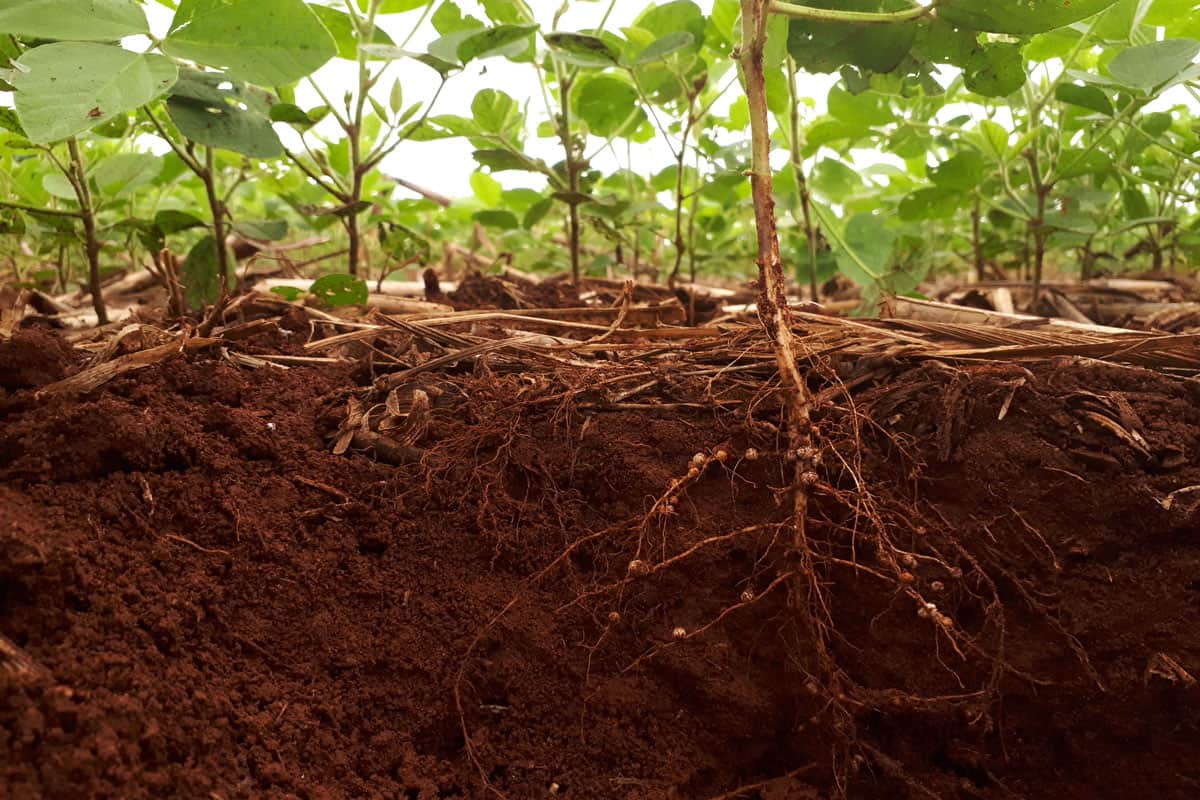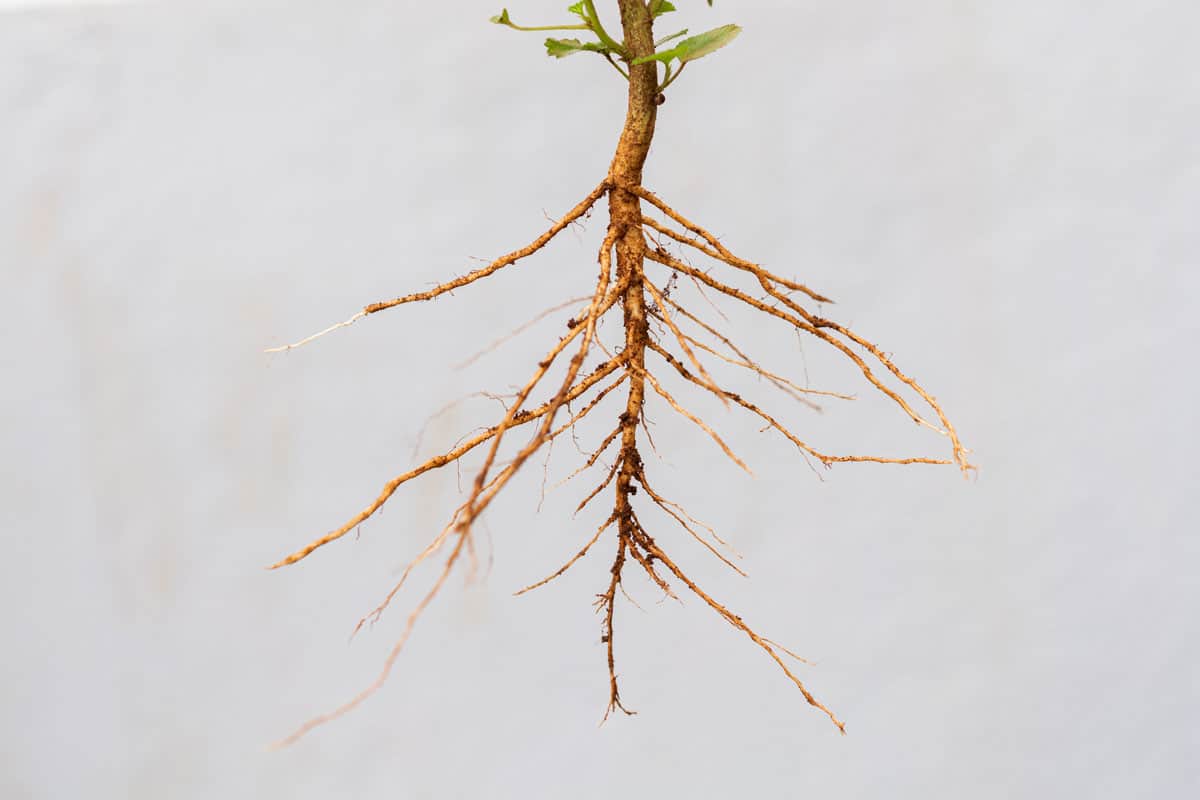You can grow a variety of vegetables by transplanting taproots. But how long should a taproot be before planting? We've done some research and have the answer below!
Taproots must be at least one inch long before planting. Plant or transplant taproots are around one to two inches long for best results. Some taproot plants need at least one inch of the crown or top to grow.
Different taproots require different ways of care that will affect how successfully you can get them to grow. In the following sections, we will go into the ways you can grow and transplant a few types of taproots, as well as how to care for them. With that said, let's dive right in!
How Long A Taproot Should Be Before Planting

Taproots one to two inches long are established enough to grow a plant successfully. It should be able to sprout lateral roots or roots that extend from the main tap.
These plants need as much soil space as possible to grow since some taproot systems extend far beyond the main root. You can grow taproots from a seed.
The taproot is the first root that sprouts, which you can let grow or transplant once it is big enough. This takes between three to five days. Taproots anchor the plant deep into the soil for better water absorption.
The types of plants with taproots include carrots, turnips, radishes, balloon flowers, dandelions, lupines, parsley, and many more.
These plants can be so rooted in the soil that they are difficult to dig out and transplant. This is an issue, as there are times when you have to take out the taproot.
Instances, where you will have to take out the taproot include overwintering, harvesting, weeding, or simply moving the plant to a better location. Taproots require ample space from each other, so replanting is an option to prevent overcrowding.
Finally, some gardeners do not directly sow seeds into a garden bed. If you like to germinate seeds in a pot or similar container first, it is essential to monitor the taproot length before transplanting.
Plants like carrots need around three weeks to let the tap establish itself. For other plants like radishes, it takes ten days. Taproot vegetables generally take 60 to 80 days to grow to their full size.
Lateral roots will eventually grow, and the more mature the root becomes inedible.
Can You Grow A Taproot In A Pot Or Container?

Considering how long taproots and their lateral roots can get, you may wonder if growing them in pots or containers is acceptable. Mostly, you can grow a taproot from seed in a pot until the tap is long enough to transplant.
If you are not planning to transplant, growing taproot up to maturity in a pot or container is possible. All you have to do is get a large pot to accommodate the taproot and lateral roots.
Choose 12 inches or deeper container that allows for good spacing.
Click here to see this plant pot on Amazon.
The bigger and deeper the pot, the better. You do not want to risk the roots growing into the bottom of the pot or overcrowding in the dirt.
This cuts the flow of their nutrition and damages the root, risking your plant's health. Aside from traditional planting pots, you can use other containers to plant taproots.
You can recycle anything from barrels, old paint buckets, and trashcans. Just ensure you have thoroughly cleaned the container and that the material does not contain toxic chemicals. Ensure proper drainage.
The bigger the space for your plants, the better. Fill up your container with loam soil and keep it moist. The best way to plant taproots is directly into the ground outside, like in a garden bed or farmland.
Nevertheless, a large enough container is a good compromise for those with less gardening space.
Will A Plant Survive If You Cut Its Taproot?

Even if the taproot is cut, your plant still has a chance of survival. Well-established taproots are sure to grow back, as the primary purpose of the tap is to act as an anchor.
If the plant is healthy, the taproot will continue to grow lateral roots. The tap itself is unlikely to regrow.
To survive, no more than 50% of the plant's root should be damaged. As much as possible, try not to damage the tap. The chances of a successful transplant are lowered the more damage there is to the root.
There is a method to transplant taproots that avoids damaging the tap. Milkweed, for example, is a plant that has a deep taproot.
It is recommended to transplant milkweed taproots in early spring, late summer, and early fall since this is when the foliage grows at its best. This avoids shocking the root.
Make sure to dig down very deep to avoid damaging or cutting the tap. Dig all around the plant four inches from each side before scooping it out. Use the correct tool, like a transplanting spade.
Finally, ensure that the soil in the transplant area is always moist. You want the newly planted or replanted tap to acclimate well, with a healthy environment to grow in.
If foliage is abundant, you can prune it slightly to help conserve the plant's energy for regrowth.
How To Grow And Care For Taproot

Plants with taproots will grow well as long as the tap is deep enough to access moisture and nutrients in the soil. The lateral branches also help with this. They can even extend for up to 75 feet or more.
The growing and care instructions vary per plant, but there are basic practices you must follow.
Though taproots need moisture, you must not overwater them. Taproots are drought resistant, considering how far down the roots can go. Like with all plants, give the tops enough daily sunlight.
You can also feed them with the appropriate type of fertilizer.
How Long Does It Take For Taproot To Sprout?
You can tell whether a taproot has formed by its sprout. Sprouting is a sign that the plant is already rooted, though this can take days up to weeks for one to grow from seed.
Here is a list of common taproot plants and how long it takes for them to germinate after sowing:
- carrots - 7 to 21 days
- turnips - 7 days
- radishes - 3 to 10 days
- lupins - 14 to 60 days
- dandelions - 10 to 14 days
- burdock - 7 days
- parsnips - 28 days
- poppy mallow - 1 to 6 months
Some plants will take longer to germinate than others. Have patience when germinating crops, and keep the seeds moist during germination. You can water the plants less and less as more leaves start to grow.
What Is The Disadvantage Of A Taproot?

One of the main drawbacks of the taproot is how difficult it can be to dig up and transfer. Aside from this, however, taproot offers mostly benefits to the plant.
They anchor it down, extend branching roots into the ground, and even store nutrients for later. Not to mention, many taproots are edible.
Do not mistake taproots for fibrous roots. While both appear fibrous, they are easy to tell apart since taproots have a primary root from which the smaller roots sprout.
The primary root of taproots goes straight down from the stem, while fibrous roots branch out in different directions.
Unlike taproots, fibrous roots are less anchored. They have no primary root. Examples of plants with fibrous roots include monocots, such as rice, wheat, and banana, among others.
To Finish Up

Taproots should be one to two inches long before planting or transplanting. When growing from seed directly in the soil, you can opt to evenly space out the plants or wait between germination to ensure enough space for the taps to grow.
You can also germinate seeds in a separate container or pot. As long as there is enough vertical space, taproot plants can thrive. The root is the first to emerge during germination, so once you see sprouts growing, the tap has established itself in the soil.
Made it to the end? Check out these related articles below:


